Elbow pain while lifting
What is an Elbow pain While Lifting?
Elbow pain While Lifting can be a common and disruptive issue for individuals engaged in weight training or other strenuous physical activities. The elbow joint is a complex structure that involves the interaction of bones, muscles, tendons, and ligaments, making it susceptible to various forms of stress and injury.
There are several causes of Elbow pain, one of which is lifting objects, heavy or light. For instance, lifting large objects frequently might result in injuries from repetitive strain.
An acute injury is another reason for elbow pain. Acute injuries can result from lifting a heavy item, particularly one that is exceptionally heavy.
Anatomy of elbow joint
Basics of Elbow
The components of the elbow are muscles, tendons, ligaments, and bones. Ligaments attach muscles to bones. The humerus, located in the upper part of the arm, and the ulna and radius, located in the lower arm, are the two long bones that meet at the elbow joint.
Your elbow can move in two main ways:
- You are bending and extending: When you bring food in your mouth or place both of your hands on the hips, you are flexing—bringing your hand towards your body—and this is made possible by flexing your arm. Stretching your arm straight enables you to perform actions like reaching your toes or putting your arms in a shirt sleeve.
- Adjusting in both directions: Additionally, you have the option to pronate or turn your palms coming from facing the floor to facing the ceiling. Many common motions, like turning the key or a doorknob, depend on these motions.
What makes up the Elbow?
The elbow joint is a complex anatomical feature that is divided into three bones:
- the upper arm bone, or humerus.
- the forearm, or ulna
- the forearm, or radius
These bones are surrounded by tendons, ligaments, and cartilage. To reduce compression stress and promote smooth joint motion, cartilage surrounds the bones. Tendons join the surrounding muscles to the bones. Bones are joined to one another via ligaments.
What is the meaning of elbow pain?
The majority of elbow pain is caused by a very straightforward cause that goes away in just a few days. Soft tissues like tendons that are strained or irritated are typically the source of the pain.
With over-the-counter medications and a few days of rest, you can typically treat this pain on your own and may not even need to visit your doctor.
It’s crucial to avoid prolonged rest since it can stiffen your elbow joint and weaken the muscles surrounding it, which raises the likelihood that you may experience more symptoms.
Easy workouts can assist in lowering the likelihood of issues later on. Arthritis may be the cause of persistent elbow pain.
The way does the elbow function?
The joint at the elbow is formed by the union of the radius and ulna, the two forearm bones, and the humerus, a long bone at the tip of your arm. Your arm can be bent thanks to this hinge joint. Your forearm can be twisted because the upper portion of the radius can rotate.
You can feel two bony parts at either end of your elbow that are part of the humerus.
These are the following:
- The outermost lateral epicondyle of your arm
- The inner portion of your arm’s medial epicondyle.
You can straighten your fingers and wrist by using muscles that are connected to the outside of the humerus.
The radial nerve, that runs on the outer surface of the elbow, connects these to the brain as well as the nervous system.
Your wrist, fingers, and ability to grasp objects are all made possible by muscles that are attached to the inner part of the humerus. The median nerve, which passes across the front of the elbow, connects these muscles to the nervous system and brain.
The small hand muscles are primarily controlled by the nerve called the ulnar nerve, which is situated on the inner surface of the elbow. For delicate and precise hand movements, these are helpful. The pinching of the ulnar nerve results in the sensation of striking your funny bone.
Causes
Soft tissues like tendons or ligaments that are strained or inflamed are the main cause of elbow pain.
When you treat them at home with basic self-care, they usually improve within a few days.
Occasionally, a medical condition may be the cause of elbow pain.
Elbow stiffness can be caused by a variety of factors, including arthritis (arth-rye-tus). A painful, swollen joint is referred to as arthritis, and there are several varieties of the condition.
Problems in the elbow joint itself, as well as with the muscles, ligaments, and joint covering, can cause stiffness.
Scar tissue can develop from soft tissue in specific circumstances, such as following an injury or surgery. This may result in stiff elbows.
The elbow may occasionally lock into place. Although it usually passes quickly, this could be the result of loose cartilage or bone fragments in the joint. During surgery, the loose pieces might need to be cleaned out.
Arthritis of the elbow
Several kinds of arthritis can affect the elbow.
The most prevalent type of arthritis is osteoarthritis. The thin layer of cartilage that covers the bones in a joint provides protection, and this is where it all begins. In reaction, the body may develop osseous spurs inside the joint and the amount of fluid within the joint space may rise. You may experience this without exhibiting any symptoms. However, it may result in joint pain, edema, and stiffness.
Osteoarthritis in the elbow is rare unless the elbow has previously sustained an injury, such as a broken bone.
Elbow arthritis can also be caused by several different types of arthritis:
- Rheumatoid arthritis: pronounced “roo-ma-toyed,” is an autoimmune disease that can lead to joint pain and swelling. Joints may feel hot, red, stiff, or sensitive to the touch. The immune system, which typically guards against disease and infection, can become confused and end up attacking healthy tissue in your body, which is how autoimmune conditions arise.
- Psoriatic arthritis (sorry-Atik): is an autoimmune disease linked to psoriasis (so-rye-a-sis), a skin disorder characterized by red, elevated skin patches with white or shiny flakes. It may result in joint pain and inflammation.
- Gout: It is a form of arthritis that makes joints hurt and swell. It is brought on by an accumulation of urine waste product crystals in the joints. The skin may occasionally be red and shiny, and the affected joints may be excruciatingly painful.
Golfer’s elbow And Tennis elbow
Tendon discomfort can occur in two different but related disorders called tennis elbow and golfer’s elbow. Although they can develop in anyone, the 40 to 50 age range is when they most frequently occur. The more prevalent of the two ailments is tennis elbow.
Playing golf or tennis isn’t the most common cause, despite their titles. These are overuse injuries connected to hand and wrist repetitive motion activities.
People who use the mouse on their computers or are constantly grabbing and twisting, such as plasterers and carpenters, may be in danger. Weight-bearing repetitive motions, such as lifting big boxes, can also lead to these issues.
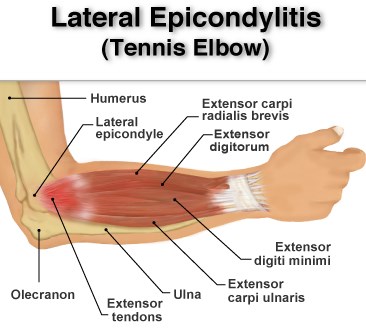
Medial Epicondylitis
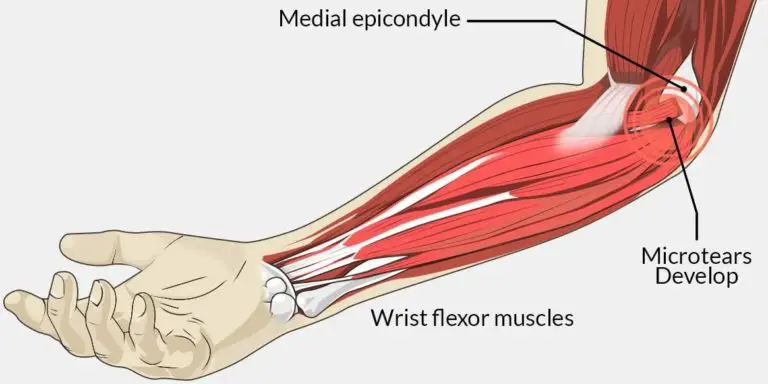
The primary symptoms include pain and tenderness on the outermost part of the elbow; for the golfer’s elbow, they are ache and tenderness on the inside. Gripping may cause pain for certain people as well.
Each person experiences pain differently; it might range from a slight discomfort to a sharp agony that keeps you from falling asleep.
Olecranon bursitis
An enlarged and inflamed bursa near the rear of the elbow is known as olecranon bursitis. The plural form of the bursa is bursae, which are fluid-filled sacs that are found where bodily components travel over one another, such as where ligaments or tendons pass over bones. They lessen friction and cushion the area.
The bony tip of your elbow that you can feel is called the olecranon. Between the skin and the bone, there is a bursa.
The most common cause of olecranon bursitis is friction or pressure over the back of the elbow, which can happen if you frequently rest your elbows on a table or chair. Because of this, the ailment is occasionally referred to as “student’s elbow.”
The bursa may occasionally become infected due to bacteria. Although olecranon bursitis usually goes away on its own, your doctor may prescribe medications if the problem is due to an infection.
Using ice packs and resting your elbow can be beneficial. Consult your physician about other possibilities for treatment if this doesn’t work. This could involve a medical practitioner using a syringe to drain fluid. We refer to this type of care as aspiration.
Compression or entrapment syndromes
Squeezing or pressing on the nerves that cross your elbow and enter your forearm can result in a number of symptoms in your hands, wrists, and forearms, including:
- Pain
- Feeling tingly in the hands and fingers
- A reduction in muscle strength
We refer to these as entrapment or compression syndromes.
Cubital tunnel syndrome
The ulnar nerve is compressed where it goes through within the elbow, which results in cubital tunnel syndrome. This might be because the area it travels through is getting more confined than usual.
Rarely, arthritis may be the cause. Additional reasons could be a fracture surrounding the nerve that has recovered into a different shape or the formation of new bone when the fracture mends.
After resting on the inner border of your elbows or bending your elbow for extended periods of time, you may experience tingling and numbness in your ring & little fingers.
weakness of the hand’s small muscles, which can only result in the ring & little fingers taking on the appearance of claws if treatment is not received.
Syndrome of the radial tunnel
Parallel to cubital tunnel syndrome, radial tunnel syndrome is brought on by pressure on the radial nerve just below the elbow. It is an uncommon ailment.
Usually, radial tunnel syndrome resolves on its own.
Radial tunnel syndrome’s primary symptom is pain that radiates down the forearm and originates at the outside of the elbow.
Tennis elbow and radial tunnel syndrome can be confused because both conditions cause similar pain.
However, radial tunnel syndrome is different in that the issue is lower down the arm rather than on the external surface of the elbow.
A distal biceps tear
The big muscle located on the front of the upper part of the arm is called the bicep. Its lower (distal) ending is connected to the upper portion of the radius via a tendon around the elbow joint, and its upper (proximal) ending is joined at the shoulder.
This tendon near the elbow tears when lifting a large weight, which might result in a distal biceps rupture. It’s possible to hear the tendon snap.
The muscle in the rear of the arm, the triceps, may experience a similar situation. This is known as a distal triceps rupture, and it can limit movement and produce pain and swelling behind the elbow.
Although it happens very infrequently, falling with an outstretched hand can be the reason.
Trapped Nerves
Other terms for imprisoned nerves are “a pinched nerve” and “nerve entrapment.” Nerves in the elbow that are trapped may be the result of surrounding tissue pressure.
The following are a few common signs of trapped nerves:
- tingling feelings
- A weakened hand, wrist, or arm
- numbness
In the elbow region, several kinds of trapped nerves can arise.
Depending on the kind of trapped nerves a person has, their symptoms may appear differently. It’s critical for an individual to pinpoint the source of their misery.
Pronator teres syndrome
This happens when the pronator Teres muscle, which is found on the upper part of the forearm, traps the median nerve.
Pronator teres syndrome is characterized by pain in the hand, wrist, or forearm.
Dislocated elbow
An elbow dislocation happens when the humerus, the upper part of the arm bone, separates or is driven out of proper alignment from the ulna and radius, the forearm bones.
An elbow dislocation may result from a fall or other incident in which the arm “cushions the blow.”
This occurs when someone shields their body from additional harm with their arm. Sometimes people act in this way on instinct.
The following are a few signs of a dislocated elbow:
- A lack of sensation in the region
- Immobility of the hand, fingers, or wrist
- An incapacity to flex or rotate the elbow
- A decrease in wrist pulse
Fractured elbow
When a fragment of the ulna, radius, or humerus fractures close to the elbow, it might result in an elbow fracture. Elbow fractures typically happen when someone collides quickly with an object.
The most frequent type of fracture in children is an elbow fracture.
The following are a few signs of an elbow fracture:
- Bruising or swelling
- Rigidity
- A cracking noise was made at the scene of the wound
- An obvious out-of-place elbow
- Tingling in the hand, wrist, or arm
- A weakening of the hand, wrist, or arm
- Persistent discomfort
Broken bones and closed fractures are the two forms of fractures that can happen in the elbow region.
When a bone fractures and penetrates through the skin, it is known as an open fracture.
In most cases, surgical treatment is the only choice. Additionally, during the healing process, moving is restricted by the use of bandages or plasters.
When a bone fractures but cannot penetrate through the skin, it is known as a closed fracture.
The bone may shatter into multiple fragments or it may break into a “clean break.” The depth of the break determines the course of treatment.
An elbow dislocation and a fracture have different symptoms, despite their similarities. It’s possible that dislocated joints have a higher chance of damaging nearby blood vessels and nerves than fractures.
What symptoms and signs of tennis elbow are present?
Overuse is typically the cause of tennis elbow. Usually, symptoms develop gradually. In the coming weeks and months, pain can worsen.
Tennis elbow symptoms include:
- Burning or soreness on the outside of your elbow that could radiate to the wrist (these feelings could intensify at night).
- ache when you bend or twist your arm (to open a jar or turn a doorknob, for example).
- soreness or stiffness as you stretch your arm.
- elbow joint swelling and tenderness when touched.
- weakened grip when attempting to hold something like a pen, wrench, racquet, or another person’s hand.
Treatments for Elbow pain While Lifting
A few days of rest and self-help remedies are frequently sufficient to end an episode of elbow pain.
It’s crucial to quit doing the activity that first caused your soft-tissue ailment, like tennis elbow or golfer’s elbow. Your symptoms should significantly improve as a result.
In the event that your issue is more complicated or persistent, your physician can suggest further therapies and treatments.
Physiotherapy Treatment
Physiotherapy treatment
Physiotherapists are qualified professionals who can assist individuals recovering from an injury or chronic illness in leading active, independent lives.
Through exercise, your physiotherapist will assist you in maintaining or regaining elbow flexibility.
You should perform general range-of-motion exercises and elbow stretches at least once per day.
Your physiotherapist may also suggest resistance bands or low-weight exercises for strengthening your triceps and biceps.
- Wrist flexion stretch: Raise the hurt arm to its full length and raise your hand as if you were telling someone to “stop.” Pull the hand back slowly with the other arm until you feel a stretch in your forearm. After 30 seconds of holding, repeat four times.
- Strengthening your wrist extension: It involves placing your forearm on a table, palm facing up, and carrying a little weight—between one and three pounds—for support. Allow your hand to fall to the ground gradually, and then curl the weight back up to the starting position with your wrist. Perform as many as thirty reps.
- Squeeze a rubber stress ball: Squeeze between your hands and the affected arm. Squeeze with all fingers and palms used. Ten times over, repeat.
Occupational Therapy
A skilled occupational therapist can recognize which movements can be uncomfortable for you.
In order to preserve your ability to function in daily life and at work, they can examine the tasks you find challenging and determine if there is another method you can complete them.
Injections of steroids
Your doctor might advise a steroid injection if you’re experiencing excruciating discomfort. After a few hours, the discomfort may get worse, but it normally goes away.
Steroid injections may temporarily alleviate symptoms of certain illnesses. After roughly six weeks, the effects of your steroid injection may begin to wear off, depending on the kind you had.
Your doctor might inject the joint as a portion of your treatment if you have inflammatory arthritis that affects the elbow, such as psoriatic arthritis or rheumatoid arthritis.
It is not advised to get steroid injections for golfer’s or tennis elbow. In the long run, they may make these illnesses worse.
Injections of platelet-rich plasma
For the tennis and the Golfer’s elbow, a procedure known as platelet-rich plasma (PRP) administration is gaining popularity. Blood cells called platelets have a variety of purposes, one of which is to aid in blood clotting in the event of an injury.
Orthopedic doctors commonly administer this treatment in hospitals. It entails drawing blood from you, and this is then processed to produce more platelets. After that, an injection is made into the sore spot.
According to recent research, PRP may be a more effective pain reliever and mobility enhancer than steroid injections. Not every hospital in the UK currently has access to this.
Surgical Operation
The majority of elbow pain cases resolve with the following treatments, however, a small percentage of patients will require surgery to reduce their symptoms.
The type of elbow surgery you require will depend on your particular issue. Below are some instances of different surgical procedures for particular elbow issues.
You can return home the same day because most operations are done as day-case procedures.
You will need to discuss the advantages and downsides of surgery with your physician and the hospital staff.
Should your rigidity stem from the elongation of newly formed bone or the shortening of soft tissues, a procedure to extract the bone or relieve the strain on the shortened tissues might be necessary. You’ll require physical treatment following the procedure.
Keyhole surgery can be used to remove loose bone fragments that are causing pain.
This indicates that the joint doesn’t need to be opened up because the procedure can be completed with a tiny cut or incision. Another name for this kind of surgery is an arthroscopy.
If necessary, an open surgical technique with a larger incision might be used to remove bone fragments from the joint.
An elbow transplant may be an option if your elbow arthritis is causing you significant pain and limiting your movement, or if it is making it challenging for you to go about your everyday activities.
Golfer’s and tennis elbow surgery
Only a small percentage of patients with these diseases require surgery. These procedures can be performed through a 4–5 cm incision or through keyhole surgery. After these procedures, you are supposed to be able to use your elbow gently right away. However, full recovery will take many weeks, and you’ll typically need a brief course of physical therapy.
Olecranon bursitis surgery
A tiny percentage of individuals might require surgery if their ailment interferes with daily activities or recurs frequently. The bursa is taken out during the procedure via an incision made behind the elbow. For this operation, some surgeons have lately begun to use keyhole surgery.
Cubital or radial tunnel syndrome treatments
Your physiotherapist is the ideal person to advise you on appropriate workouts.
The majority of problems can be fixed at home with:
- reducing or altering the movements that are making your discomfort worse
- using ice, like a tea towel-wrapped package of frozen peas
- using analgesics
- using a splint to support it; your doctor, pharmacist, or physiotherapist can advise you on the most suitable ones to use.
Surgery for Cubital or Radial tunnel syndrome
A tiny percentage of patients will require surgery to treat these ailments. The afflicted nerve is located by making an incision, after which it is released from the tissues pressing on it. When your pain permits, you can utilize your elbow for jobs that don’t require heavy lifting right away and proceed with further activities.
Treatment for ruptured triceps or distal biceps
You should get medical help as soon as possible if you believe you have a triceps or distal biceps rupture. In order to avoid irreversible harm to your arm, these disorders may necessitate immediate surgery.
Either make an immediate appointment with your general practitioner or visit an accident & emergency department.
Depending on how active you are and whether your daily activities require you to twist your forearm, surgery might be advised.
In order to repair the damaged tendon back to the radius, a cut must be made across the front of the elbow.
Ways to prevent elbow pain while lifting
Ideally, you should have your ligaments trained for the impending stress in order to avoid elbow pain. Start by progressively strengthening your grasp. When performing a strength training regimen, you can practice gripping and pinching kettlebells or plates.
As previously discussed, the treatment for this kind of tendinitis involves eccentric strengthening activities for the wrist and forearm muscles, but they can also serve as a preventative measure.
Your elbow tendons can be trained to withstand a higher load by performing heavy, gradual resistance training. Use a weight that allows you to exercise wrist curls & reverse curls at an average level of perceived intensity of around 8 out of 10.
Curl slowly for three seconds, then let go for another three. Make three sets and repeat until you are exhausted.
There are things you can do to avoid elbow pain:
Lift little weights or give a tennis ball a squeeze. Your muscles can absorb the momentum of abrupt physical stress with the help of even basic exercises.
Before you do anything, stretch. To warm up your muscles, take just a few minutes to walk or jog. After that, stretch gently before starting your game.
Adjust the form. Ask a teacher to examine your form, regardless of the sport you play, to prevent overusing your muscles.
Make use of the appropriate tools. Upgrade to lightweight graphite clubs if you’re using outdated golf irons. Make sure your tennis racket fits you if you play the game. Elbow issues could arise more frequently with a racket that has a big head or small grip.
Lift correctly. Maintain a stable and tight wrist when lifting anything, even free weights, to lessen the strain applied to your elbow.
Recognize when to take a break. Don’t use your elbow excessively. Take a pause as soon as elbow pain appears.
Risk Factor
Golfer’s elbow may be more likely to occur if you are:
- 40 years of age or older
- engaging in repetitive tasks for a minimum of two hours per day
- Overweight
- A puffer
Summary
Golfer’s elbow, also known as medial epicondylitis, frequently results in inner elbow pain. This type of chronic or acute tendinopathy causes irritation and pain in the tendons of the inner elbow. Additionally, a person may feel weakness in their forearms and/or wrist pain.
Working with certain instruments or participating in some sports that require repetitive hand motions are risk factors for developing inner elbow pain. One’s risk of inner elbow pain is increased by weaker wrist & forearm muscles and bad form.
Typical treatments include ice, anti-inflammatory medications, and strengthening exercises. Sometimes a doctor will recommend a more aggressive course of treatment.
The majority of internal elbow pain instances go away with rest and DIY remedies.
FAQs
How can I avoid having elbow pain when lifting?
Use good form when lifting, refrain from using too much weight, and switch up your arm-stressing exercises every workout to prevent elbow pain.
For what length of time does the lifter’s elbow heal?
For the treatment of tennis elbow or golfer’s elbow, ice, rest, anti-inflammatory drugs, and modifications to recurrent movements are typically sufficient. However, you should speak with your orthopedic elbow expert about steroids or surgical options if your elbow discomfort does not go away with rest and therapy after six to twelve months.
Does ice assist with tennis elbow?
Additionally, there may be tenderness to the touch in the region behind the elbow. For at-home treatment, occasional ice packs, relaxation, and activity restrictions should be used. For a week, Aleve or Ibuprofen must be given on a regular basis to relieve discomfort and minimize inflammation.
Does heat help with elbow pain?
Tennis elbow may also benefit from heat. Applying heat promotes circulation by widening blood vessels. Providing the wounded area with new oxygen and nutrients can speed up the healing process. Several times a day, spend up to twenty minutes at a time using a heating pad as well as taking a warm bath.
Can elbow pain be caused by weak triceps?
The most prevalent signs of triceps tendonitis are weakness as well as pain in the elbows, shoulders, or triceps. When attempting to use these muscles, like in pushing or tugging with the arm, pain frequently gets worse. Other signs and symptoms could be elbow, triceps, or shoulder aches.
References
- Elbow pain. (n.d.). Versus Arthritis. https://versusarthritis.org/about-arthritis/conditions/elbow-pain
- King, C. (2023, September 19). What to know about elbow pain that occurs when lifting something. https://www.medicalnewstoday.com/articles/elbow-pain-when-lifting#causes
- Professional, C. C. M. (n.d.). Tennis Elbow (Lateral Epicondylitis). Cleveland Clinic. https://my.clevelandclinic.org/health/diseases/7049-tennis-elbow-lateral-epicondylitis
- Golfer’s elbow – Symptoms and causes – Mayo Clinic. (2022, September 28). Mayo Clinic. https://www.mayoclinic.org/diseases-conditions/golfers-elbow/symptoms-causes/syc-20372868
- Sports, A. P. A. (2022, December 2). Why Do Weight Lifters Get Elbow Pain? Active PT & Sports. https://www.activeptandsports.com/why-do-weight-lifters-get-elbow-pain/
- Mph, Z. S. (2023, March 14). What causes inner elbow pain, and how is it treated? https://www.medicalnewstoday.com/articles/inner-elbow-pain#causes
- Elbow pain. (n.d.). Better Health Channel. https://www.betterhealth.vic.gov.au/health/conditionsandtreatments/elbow-pain
- Quick fixes for aching elbows. (2023, June 26). Harvard Health. https://www.health.harvard.edu/pain/quick-fixes-for-aching-elbows

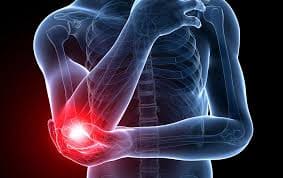

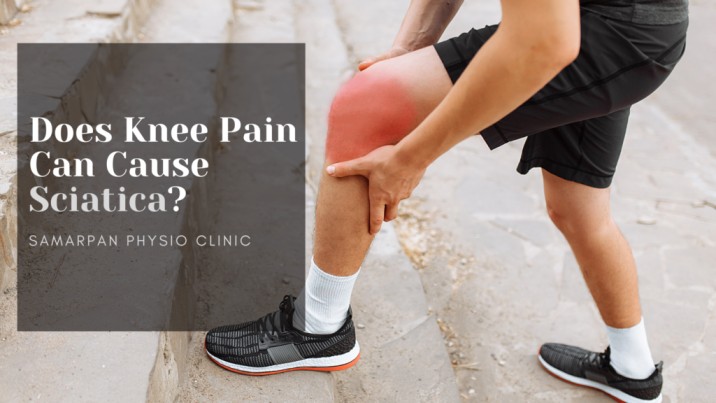
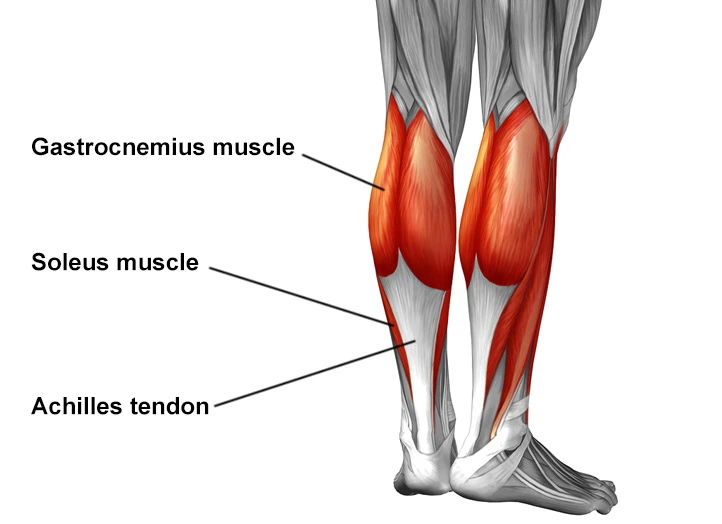
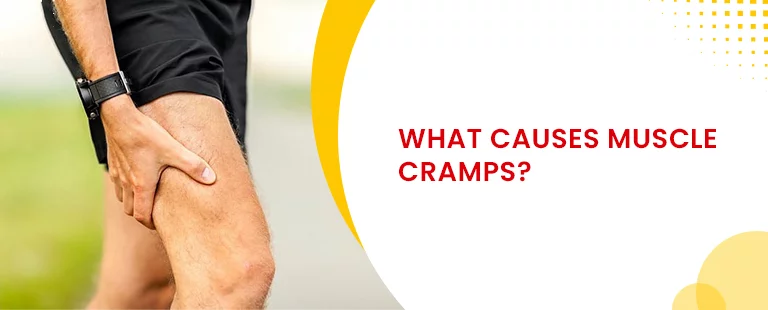
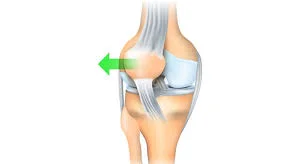
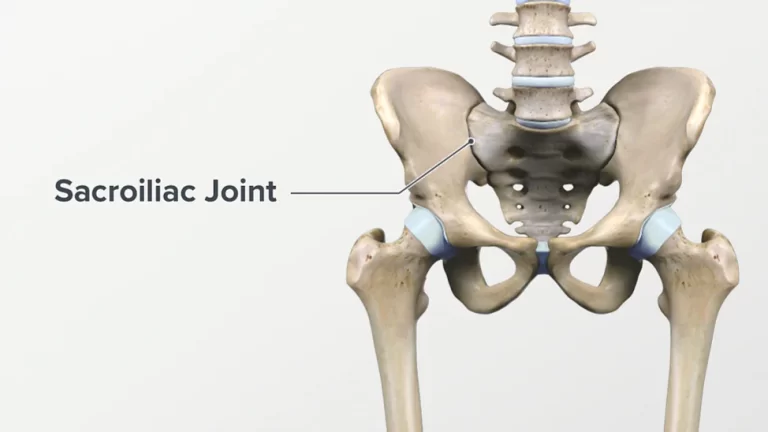
One Comment